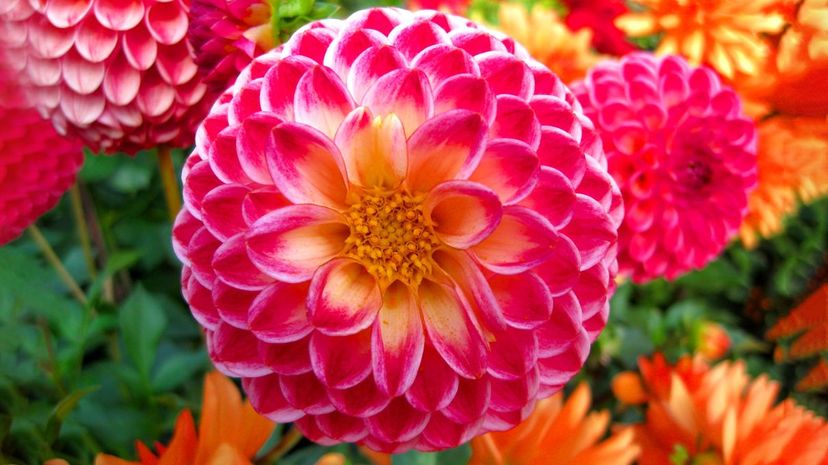
About This Quiz
Are you able to identify a bulbous flower on sight? Prove your horticultural wit with this rewarding garden quiz. Let our gorgeous images prompt your exact bulb labels!Â
Bulbs contain a plant's genetic material. Specific conditions can either trigger them to grow on to become blooms or cause them to be damaged and worthless. Sometimes we think that flowers do not bloom because we've given them too much or too little water or sunlight, but damaged bulbs could also be the reason. When selecting bulbs to plant, make sure you understand which bulbs hold up the best, because you never know where those bulbs have been and how they were stored. Don't be afraid to ask your local seller time, temperature and source-of-origin questions.
In our eagerness to see buds and blossoms, we sometimes over-water our plants or expose them to too much sun. Certain plants thrive best with little care or pruning, so it's good to know when to ease up on that tender loving care. Wise flower growers also know that there is an art to planting bulbs. Our quiz suggests tips for distancing and selecting the best pairings. Some flowers prefer crowded growth environments, while other plants perform better in spacious spaces.
Lend your flower identification skills and match labels to the following virtual garden of flowers!
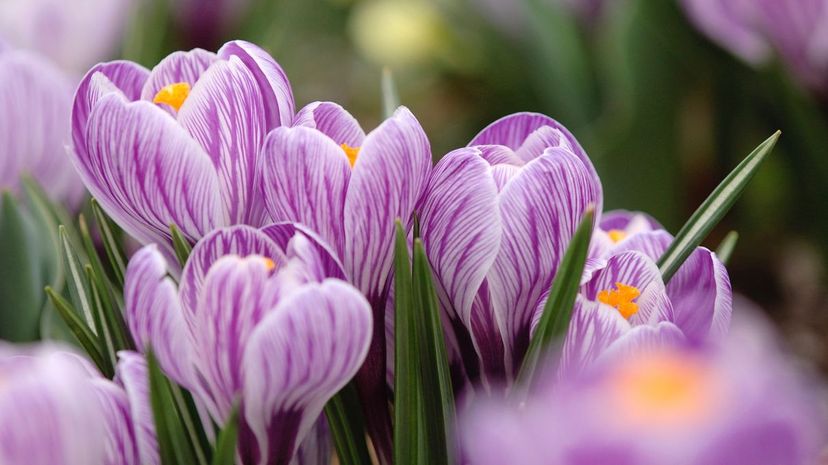
Crocuses emerge from the ground early in the year; you'll notice these flowers pushing through the snow. The plant yields copious amounts of pollen and nectar, so bees love them. Expect three to four blossoms from one large bulb.
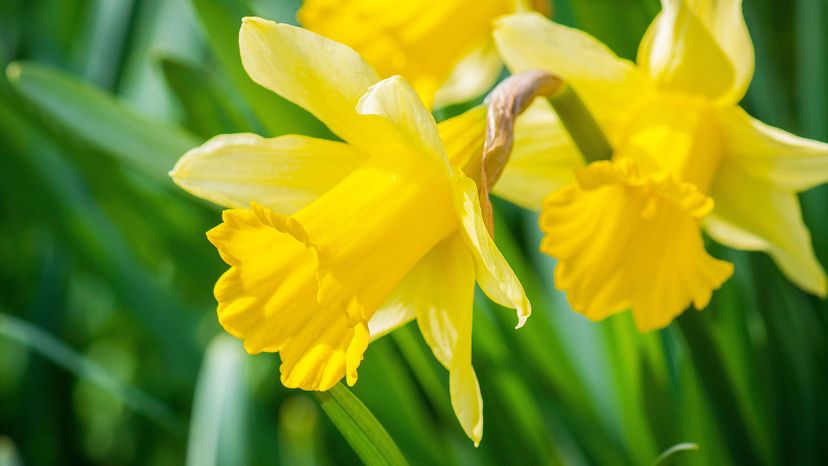
Squirrels tend to leave daffodil bulbs alone, and you won't need to divide them for many years, as they tend to stay in place for long periods. The bulbs proliferate underground to form a large mass.
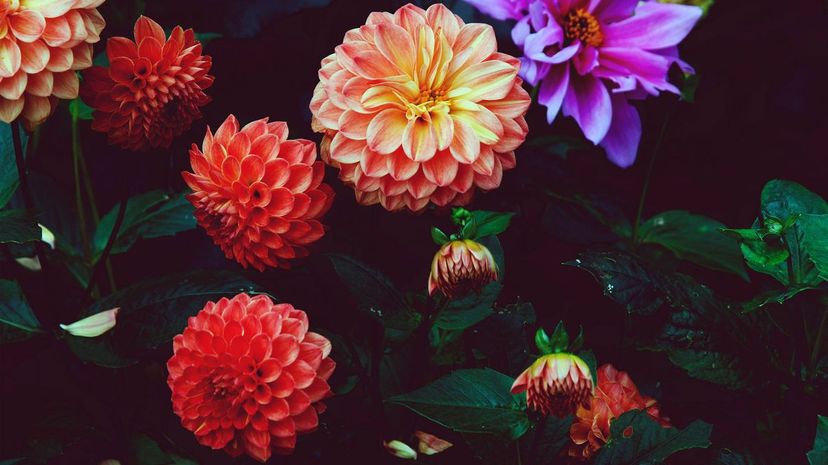
It's a good idea to save your dahlia bulbs during freezing winters by digging them up and stowing them for springtime. However, covering your flowerbeds with grass trimmings for insulation may also protect the bulbs during the coldest weather months.
Advertisement
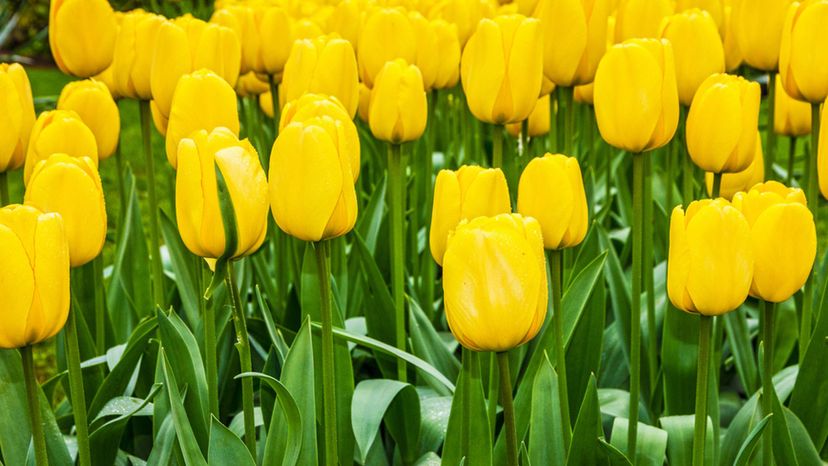
Today, you can purchase tulip bulbs for mere change, but several centuries ago, tulip bulbs were reserved just for aristocrats, as they were highly valued. In the mid-1600s, the Dutch were virtually obsessed with cultivating, purchasing and selling the bulbs.
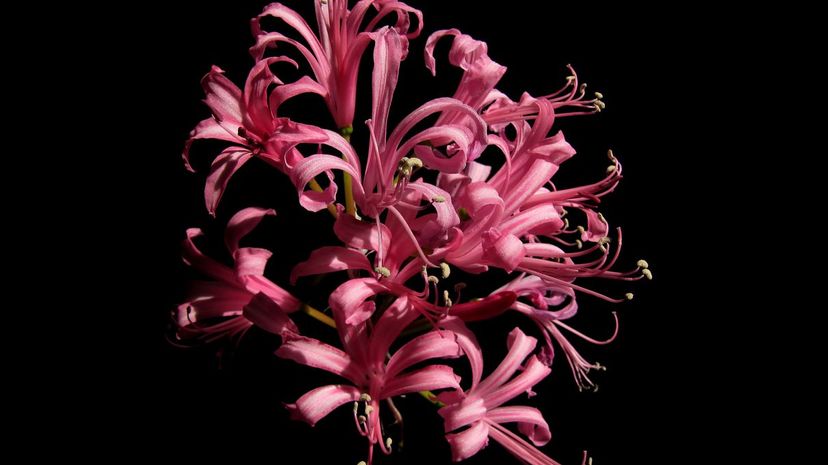
The perennial nerine (Nerine sarniensis) typically blooms in autumn and is native to South Africa. Cultivars of the late-flowering bulb are divided into three groups: evergreen, winter growing and summer growing.
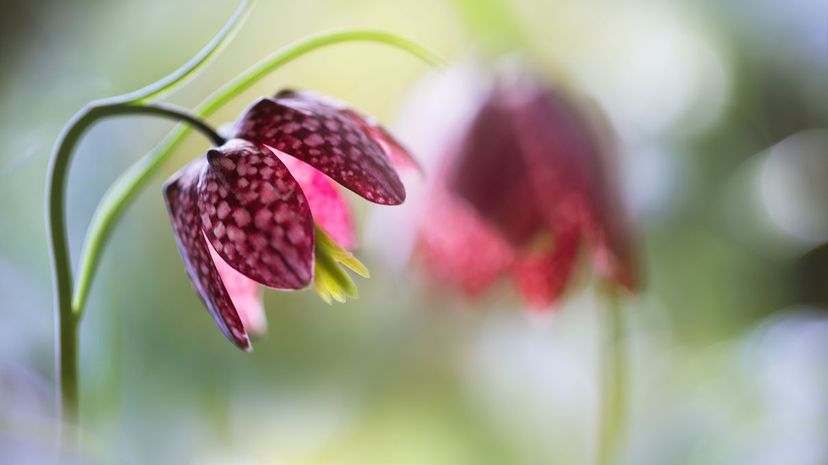
Checkered lilies have smaller-than-average bulbs. The flower blooms up to approximately 12 inches and sprouts checkered or similarly-patterned flower bells. For best results, plant these bulbs 3 to 4 inches apart from each other.
Advertisement
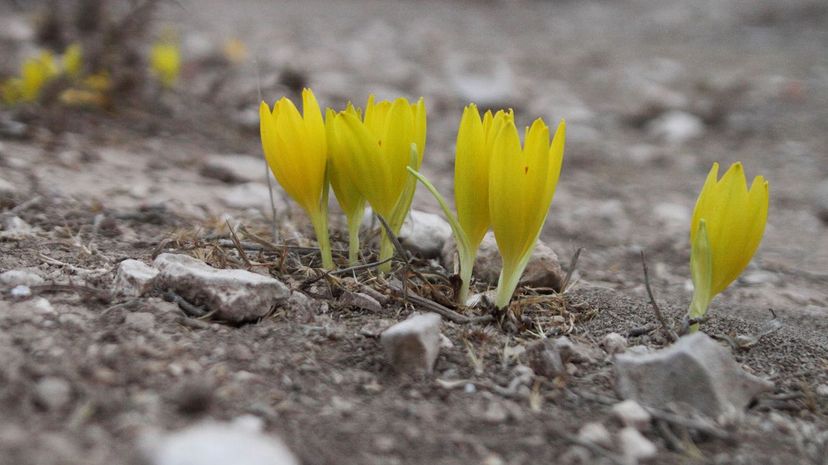
Sternbergia blooms deep-yellow flowers in the fall. The bulb has been nicknamed "winter daffodil of the South," as the flower thrives in Southern climates. It's also been dubbed "fall daffodil."
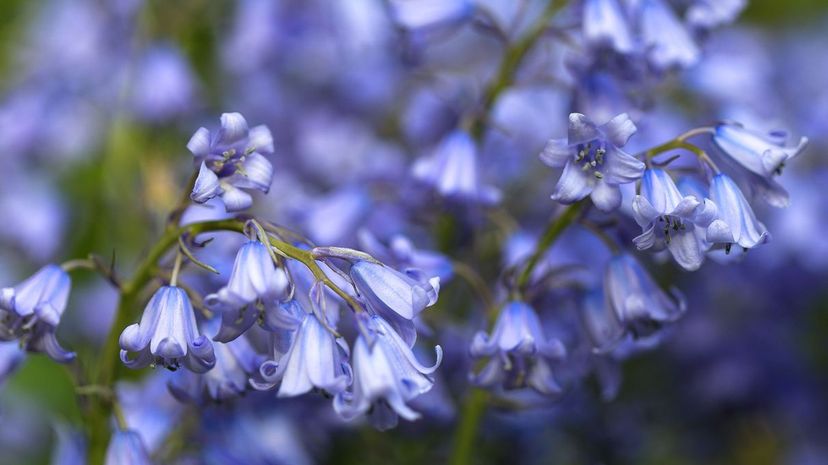
Spanish bluebell (Hyacinthoides hispanica) bulbs measure 12 centimeters in size. To guarantee substantial root proliferation, try potting the bulb in drained potting mix and placing it in cool shade for roughly 12 weeks. Then set it in a cool environment and expose the flowering bud to indirect sunlight.
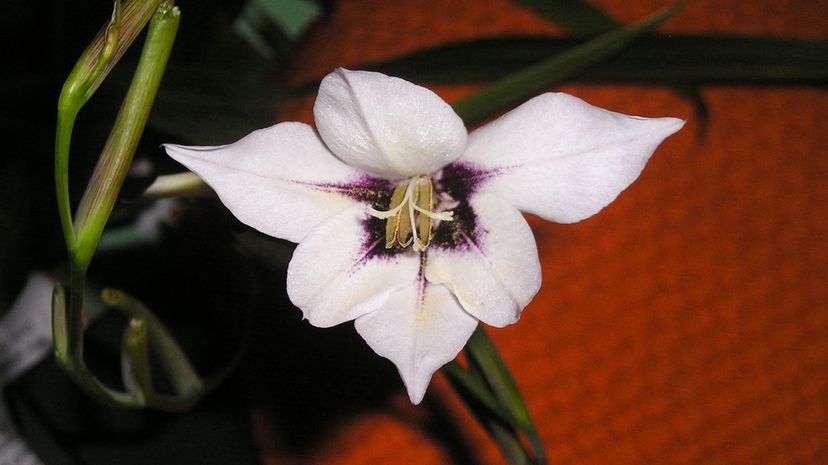
Also known as Abyssinian sword-lilies, gladiolus Murielae are fragrant flowers. The bulbs originate from the mountains of Ethiopia and were first retrieved from there in 1844. Expect elegantly arched stems from your blooms.
Advertisement
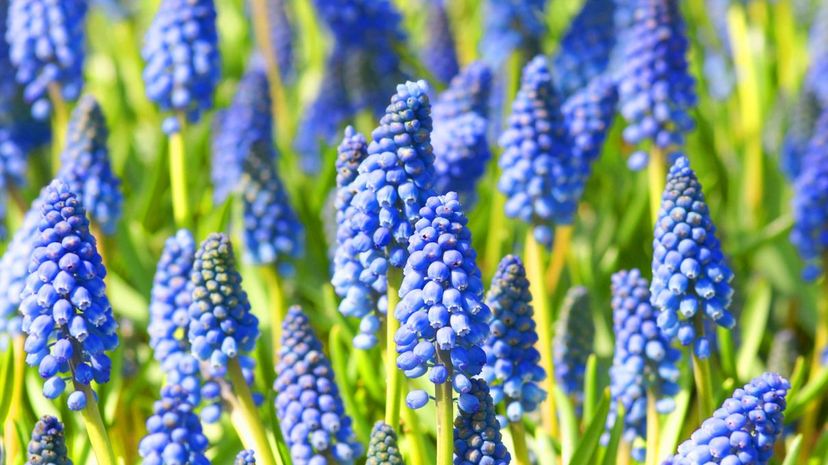
Don't let the small "minor" bulb of the grape hyacinth fool you. The bulb sprouts an abundance of blossoms every spring. Hyancinth bulbs are native to Greece, Anatolia and North Africa.
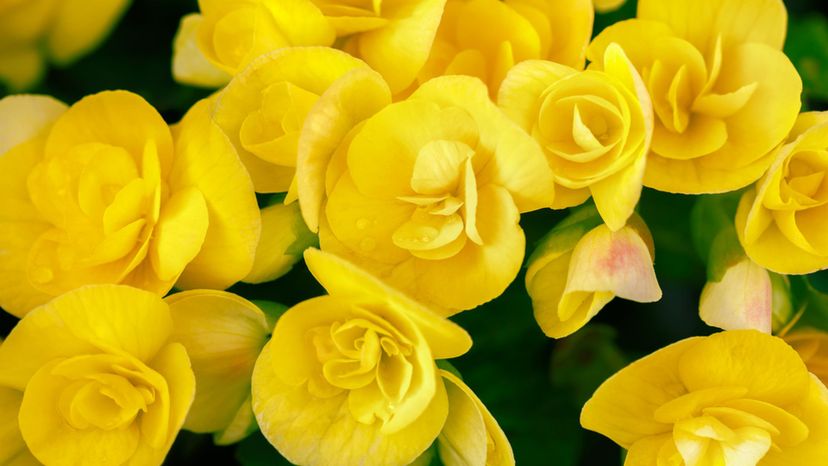
Begonia grows from bulbous tubers planted in the springtime. The large plants produce flowers that grow to 5 inches in diameter. People tend to over-water begonias, so make sure to leave already damp blooms alone.

The Peruvian lily, also called lily of the Incas, is native to South America and kindred to the amaryllis. Plant these bulbs 1 foot apart and 6 inches deep in drained soil. Retrieve the bulbs before first frost and store them during the winter months.
Advertisement
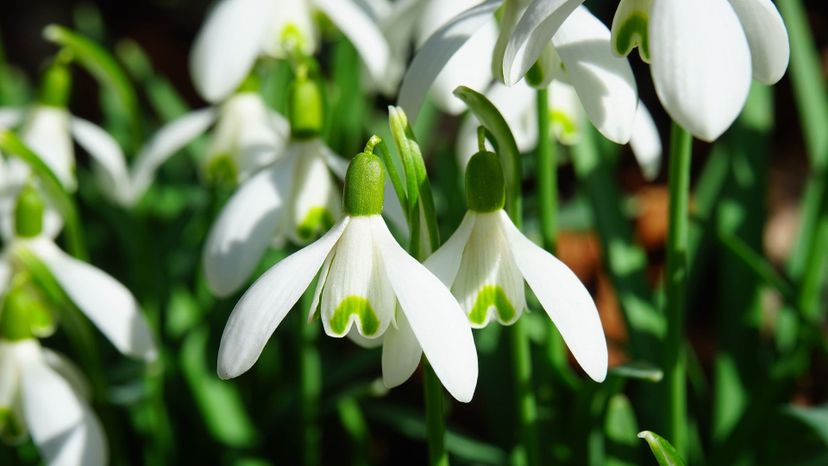
Common snowdrop (Galanthus nivalis) and giant snowdrop (G. elwesii) sprout early and grow natively across much of Europe. More modern cultivars of snowdrop have a tendency to clump.
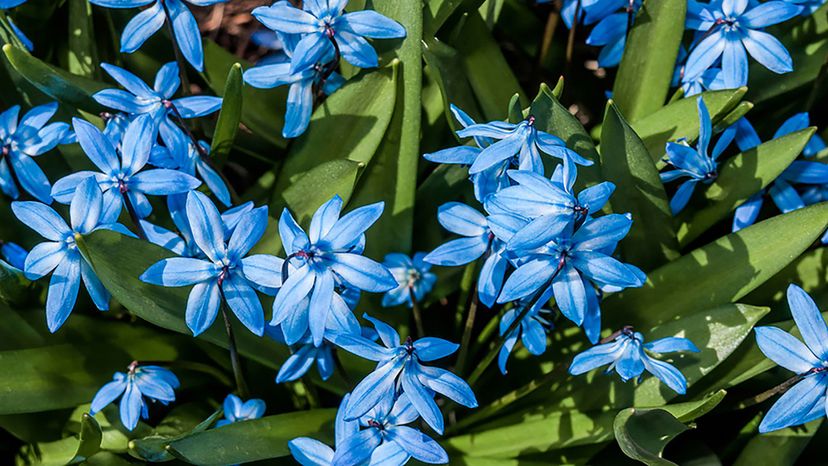
Siberian squill (Scilla siberica) is a perfect shade plant that blossoms at the end of March. The bulb grows well when covered by towering bushes and trees. This reliable spring-blooming blue flower plant spreads quickly.
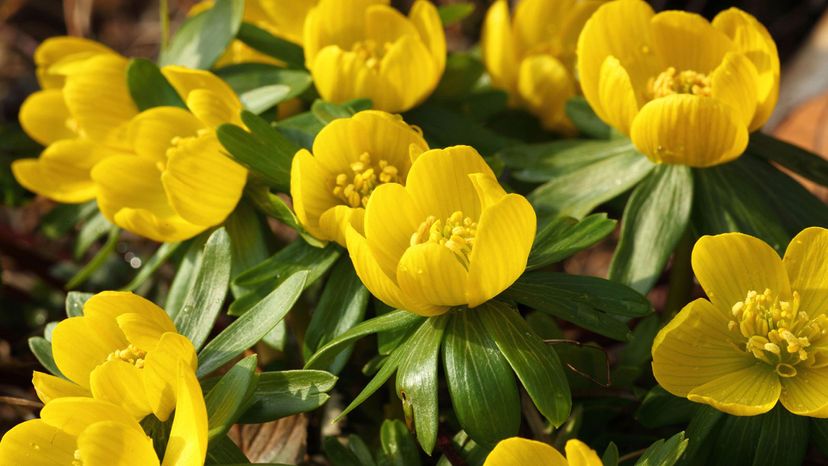
Winter aconite (Eranthis hyemalis) can withstand a reasonable amount of frost even after flowering. The bulb's 2- to 3-inch flowers poke through as early as February and look like buttercups.
Advertisement
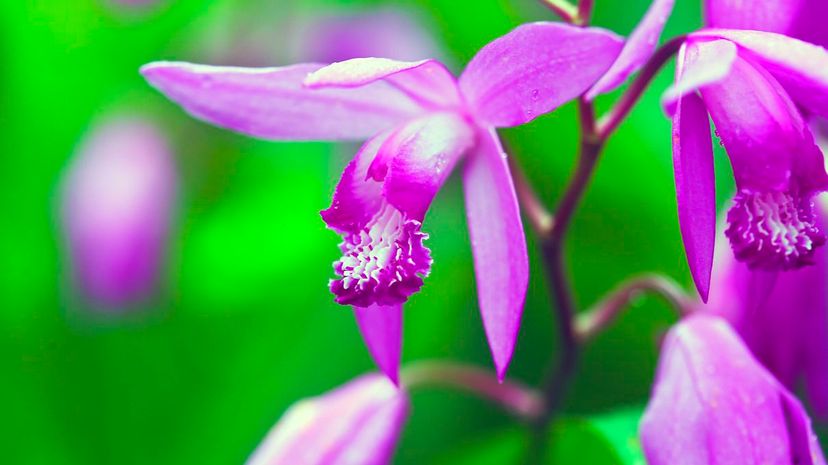
For summer and fall blooms, plant Chinese ground orchid (Bletilla striata) bulbs in the early spring. Protect the plant from winter frost by mulching with several inches of compost material.
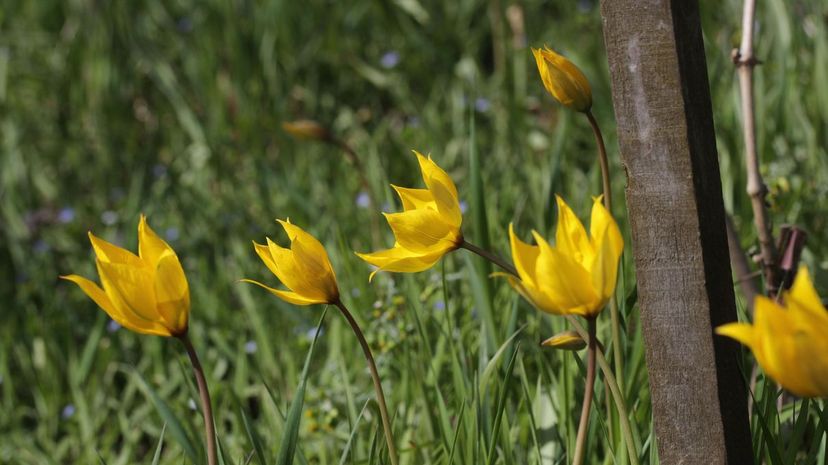
Species tulips are sometimes referred to as botanicals or wild tulips. These plants are ideal for planting in rocky spaces. Bulb varieties sprout at various times, from early spring to mid-season to late spring.
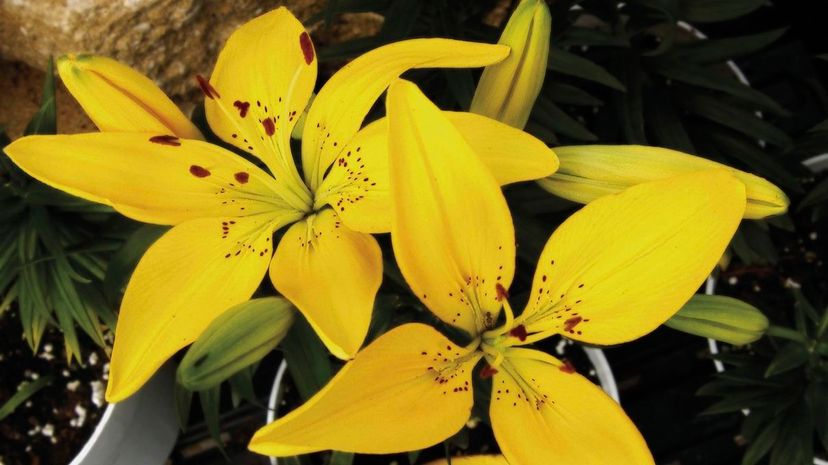
Member of the amaryllis family, Aztec lily (Sprekelia formosissima) is native to Mexico, South and Central America. Red flowers are quick to sprout and resemble orchids. For best results, give bulbs water in small quantities until buds appear.
Advertisement
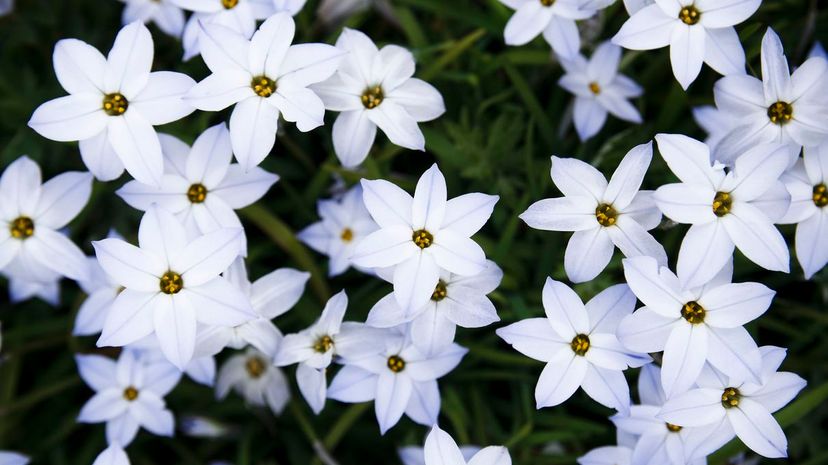
The spring starflower (Ipheion uniflorum) grows 6 to 12 inches tall. The lilac-blue blossoms are especially prevalent in gardens of the southern United States. You'll notice these bulbs will sprout all through March.

Society garlic should be brought indoors for the winter, as the bulbs do not endure frost well. The flower resembles lily of the Nile. As the name implies, the bulbs sprout shoots, leaves and flowers that are great garlic substitutes for meals.
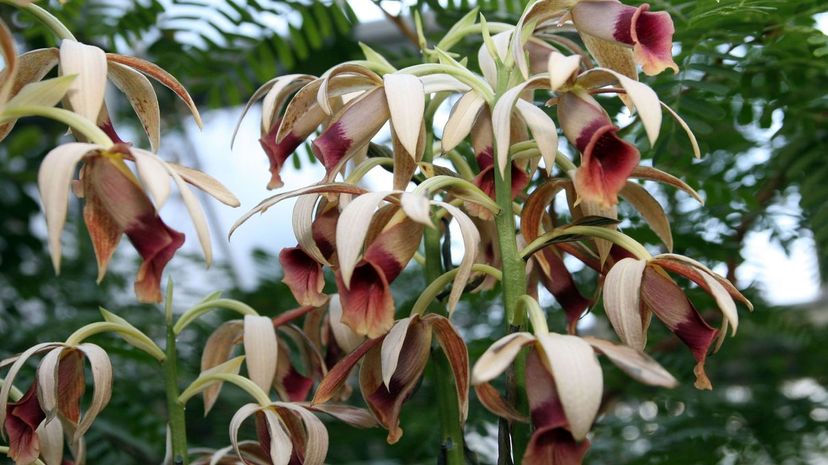
Tropical nun's cap orchid (Phaius tankervilleae) is native to Australia and eastern Asia and is occasionally found in Japan. The flower is not grown as frequently as other orchids because the bulbs are difficult to store.
Advertisement
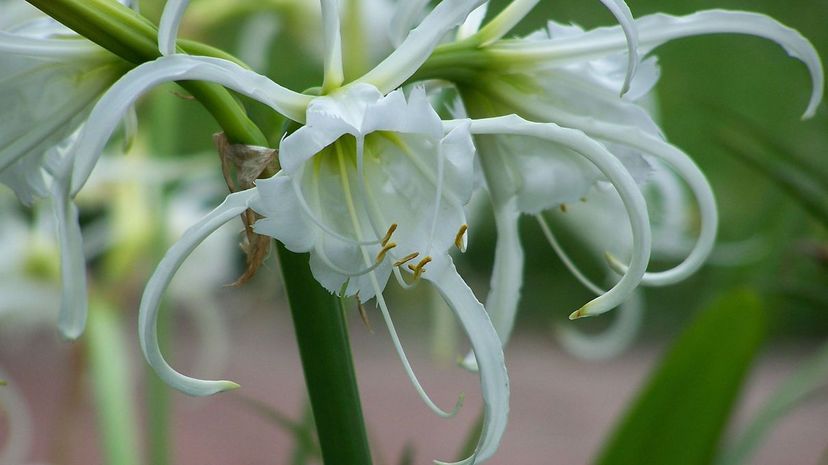
Most Peruvian daffodil bulbs sprout white flowers. The sulfur green variety is a yellowish color. The flower grows at the start of summer with leafless stems that can reach as high as 30 inches.

Look for loose stem clumps that form up beyond the base foliage with golden garlic. Blooms appear in the middle of springtime, with subsequent growth occurring until the end of spring.
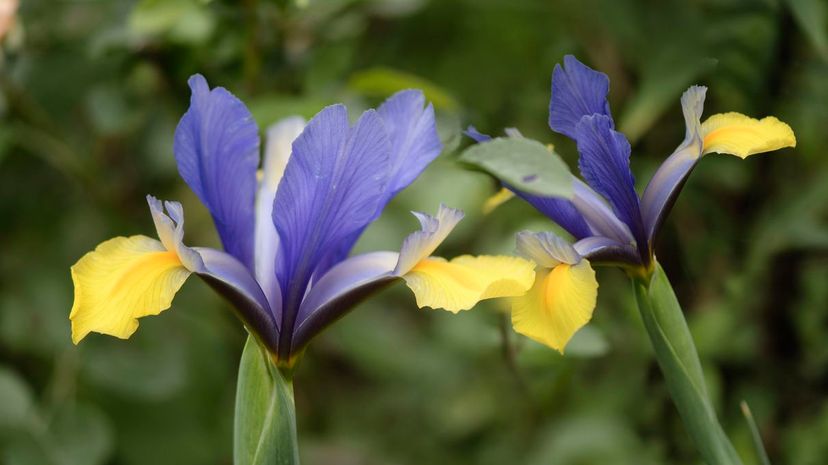
Dutch iris bulbs are cultivated primarily as cut blooms. The deep blue Wedgewood variety is the most popular Dutch iris, and a yellow type also exists. The plant blossoms at the start of spring.
Advertisement

The daisy-like Grecian windflower (Anemone blanda) comes in white, purple, pink, red and blue are varieties. Expect the bulbs to bloom as high as 8 inches. For best results, place bulbs 4 inches apart in well-drained soil and expose in partial shade.
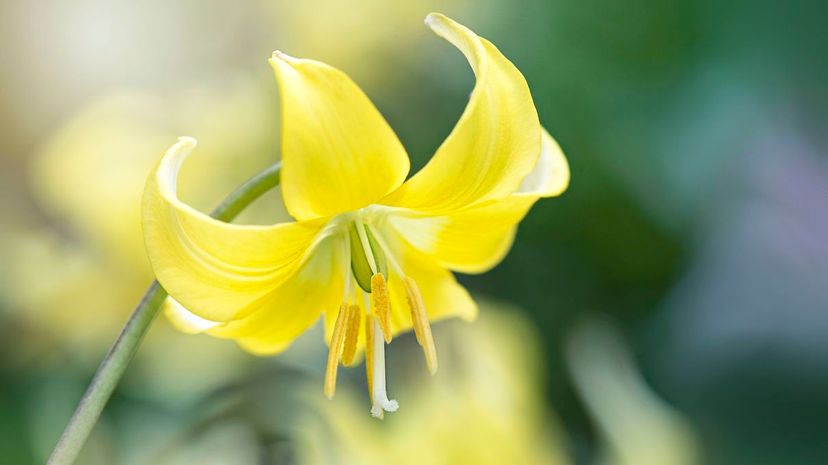
The Pagoda trout lily (Erythronium Pagoda) prefers partially shaded growing environments. Plant the bulbs 3 inches deep in well-drained soil and make sure that the pointy end of the bulb is planted upright.
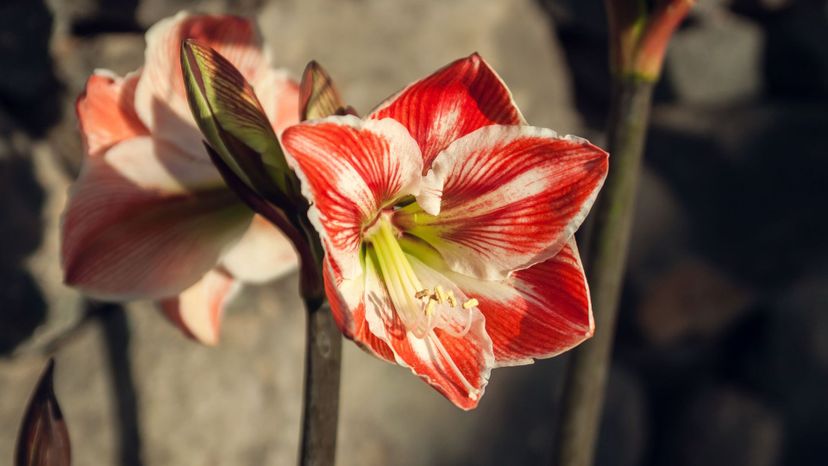
The larger your amaryllis bulb, the more lily-shaped blooms it will produce. The bulbs increase in size every season. Proceed with caution when purchasing bulbs; select firm tubers to avoid the possibility of damage from rot or poor storage.
Advertisement
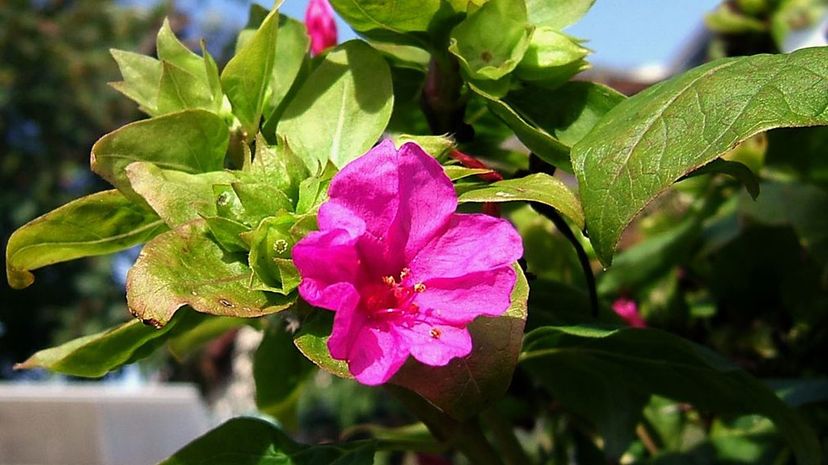
Perennial "four o'clock flowers," Marvel of Peru (Mirablis jalapa) are popular in England and arrived in the country in the 16th century. The citrus-smelling, late-afternoon-blossoming flowers are easy to cultivate.

Argentine rain lily (Zephyranthes candida) bulbs bloom clusters of shiny leaves. The plant sprouts 1 foot tall, prefers to grow in full and partial shade environments and requires little to no pruning.
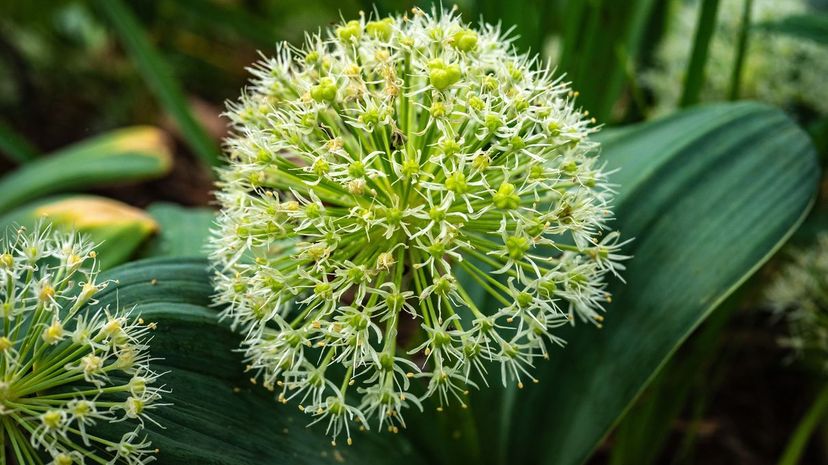
The short-growing, globe-shaped perennial Turkestan onion (Allium karataviense) blooms to 10 inches in height with two wide, curvy leaves. Expect this plant to show up at the end of winter.
Advertisement
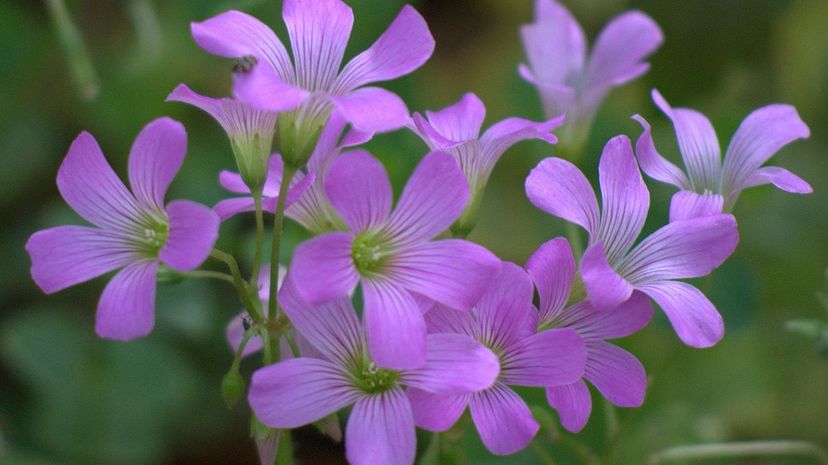
Violet wood sorrel (Oxalis violacea) bulbs bloom clover-like leaves. The fragile plants flourish in woodsy environments. Expect to see five flower petals per stem rise above the leaves.

The fragrant grand crinum lily (Crinum asiaticum), commonly known as poison bulb, sprouts on a 3- to 4-foot stem. The stalks yield at least 20 spider-like flowers and require wide spacing.
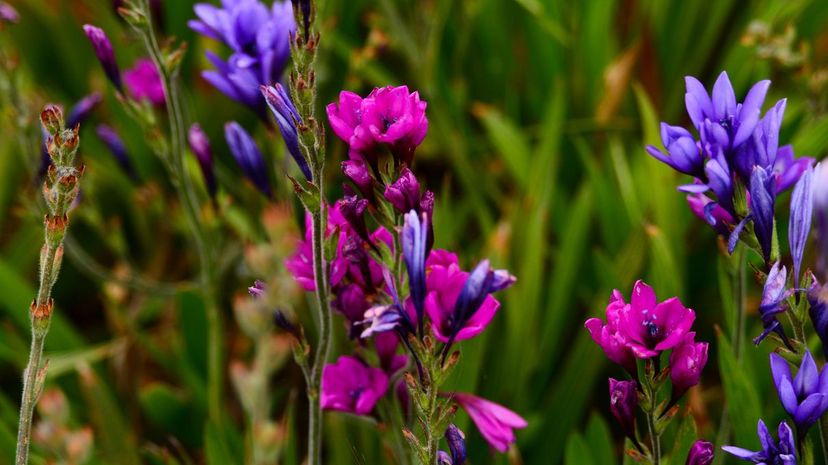
Baboons are said to consume the swollen underground stems of the baboon flowers (Babiana rubrocyanea) of South Africa. Expect to see firm cyan and magenta blossoms in the spring season.
Advertisement
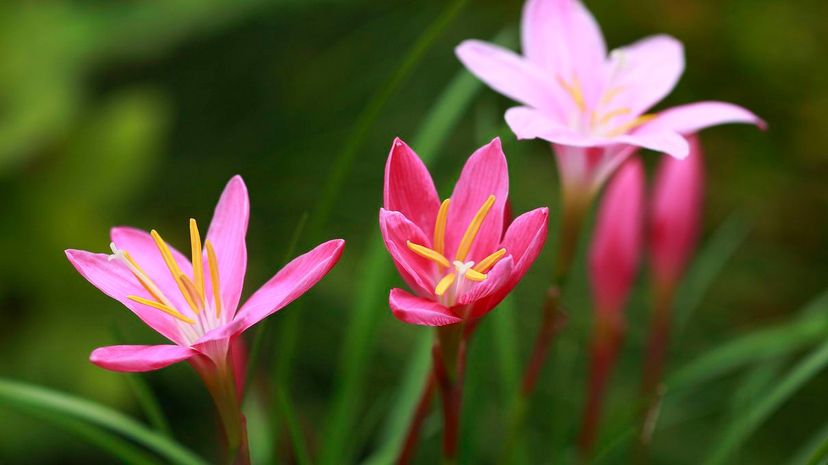
The easy-to-cultivate rain lilies (genus Zephyranthes) sprout from bulbs that bloom when it rains. There are many varieties of this plant, which prefers crowded growth environments and well-drained soil.
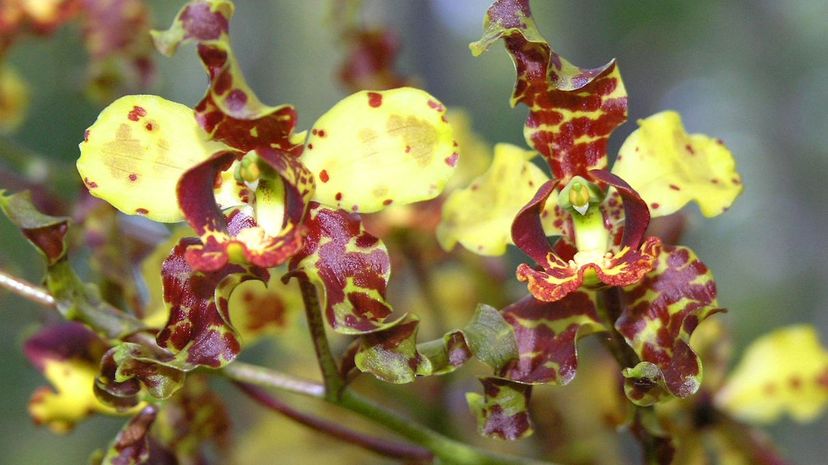
The foot-long bulbs of the cowhorn/cigar orchid (Cyrtopodium punctatum) can grow beyond 2 feet in length. From March until May, look for blossoms that bloom on branched, partially arching stems.
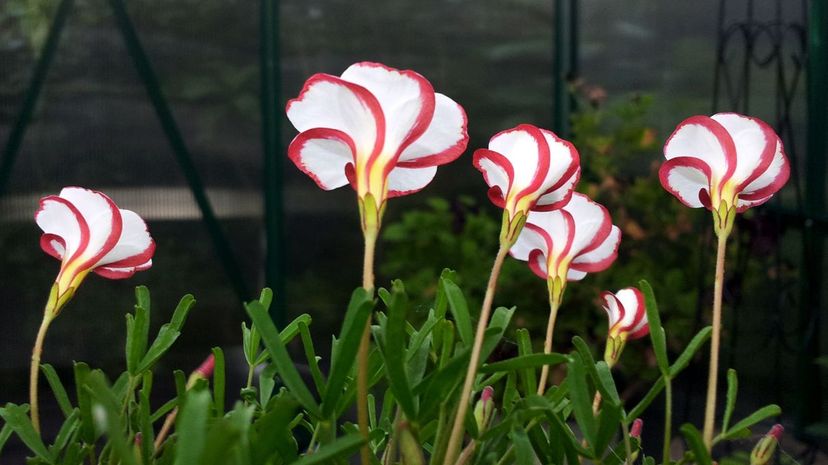
There exist close to 850 species of oxalis. Oxalis versicolor is the bulb variety that tends to bloom for six weeks or longer. These bulbs prefer well-drained soil, so monitor their blooming performance and water accordingly.
Advertisement
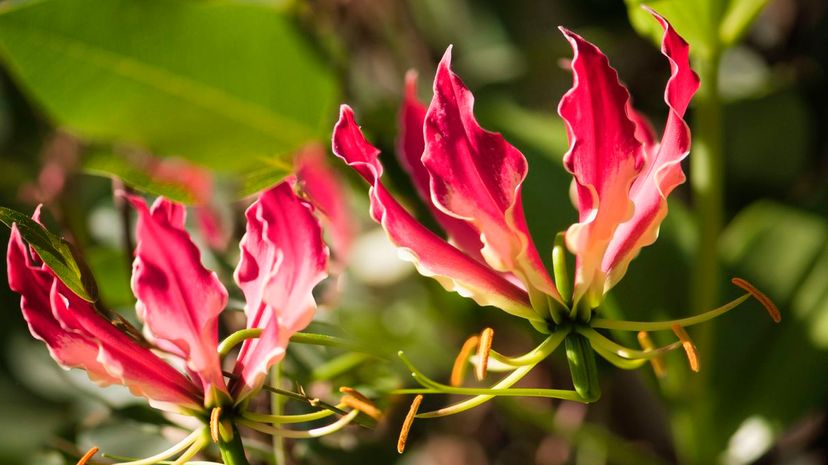
The semi-arching leaves of the South African fire lily (Cyrtanthus mackenii) grow up to 12 inches long. Expect to see the fragrant flowers blossom at the end of fall and during winter in warmer climates.

The low-maintenance nun's orchid is so named because of the nun-figure shape inside every flower. These bulbs prefer moist soil and partial sun. Be sure to protect them with a substantial layer of mulch for the winter months.
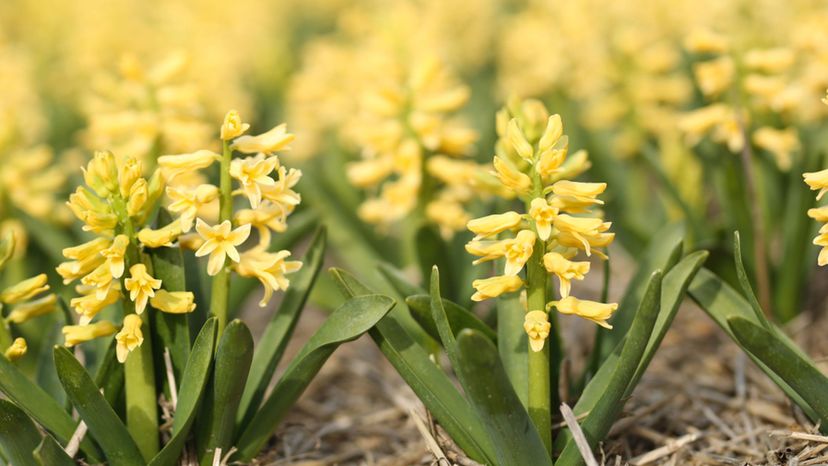
The plump Dutch hyacinth bulbs are good in gardens as well as potted soil environments. The larger bulbs produce large blossoms that can sprout from 6 to 10 inches in height. Store these bulbs tightly enclosed in a refrigerator away from other produce.
Advertisement
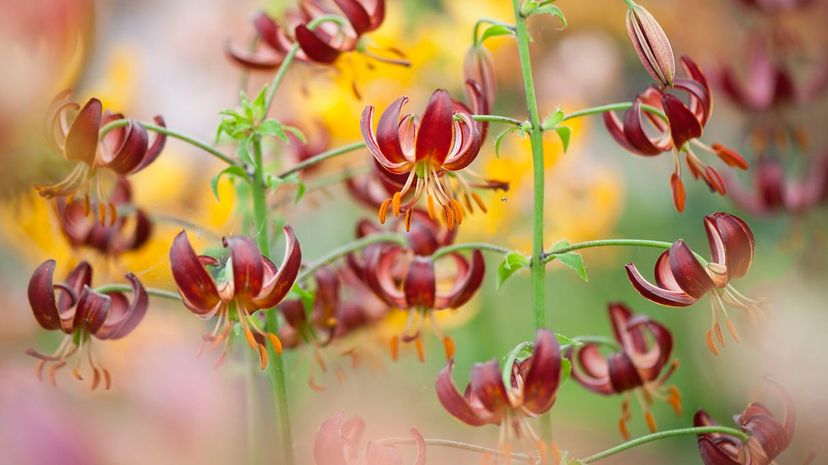
The Lilium martagon species is native to central Asia and Europe. Expect downward-facing flowers that prefer partial shade. Normally, the flowers stand erect, but they will bend towards the sunlight when in too much shade.